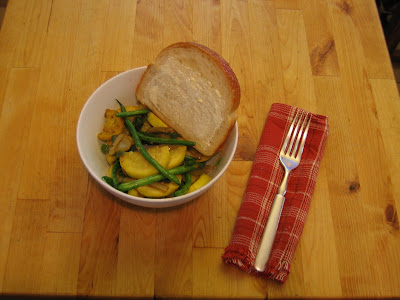 It's very bleak.
It's very bleak.This photo was taken on a simple trip to the mailbox. The wind chill was 80 below zero and my nose fell off about half way back to the house. I am only exaggerating a little.
 Let's embrace this season. We must have it to have the rest of them. Our Spring must endure our Winter to fully form herself.
Let's embrace this season. We must have it to have the rest of them. Our Spring must endure our Winter to fully form herself.
I make a garden tool. I live in a place that is frozen for more months than I care to count. The funny thing is that you folks are buying them now. I keep getting orders from places where I know it's much worse than it is here. Sunday night I got an order from Dysart, Iowa. It's a town almost small enough to be "misplaced" under the blanket of snow that fell on it last week, but one optimistic Midwesterner with his eye on the future and his heart set on Spring ordered a broadfork.
Thanks, Ryan. I share your pain. Your broadfork will lean against the wall for at least 3 more months while the Earth will successfully repel any attempt to penetrate it. Your spirit rides the wave of seed catalogs that will arrive in your mailbox in the next 30 days, and I ride with it.
We have gotten past the longest night of the year, and in 6 months, we'll be at Summer Solstice; the beginning of the return to darkness in the night. It's hard to imagine that between now and then, we will have planted seeds in the (presently frozen) soil and they will have produced auxins, germinated, and will begin to provide us with a food supply if we have done our part.
We're all so anxious to do our part, but most of us must wait. We wait while the mercury heads down, down to the places where it's just not fun to be.
 Let's embrace this season. We must have it to have the rest of them. Our Spring must endure our Winter to fully form herself.
Let's embrace this season. We must have it to have the rest of them. Our Spring must endure our Winter to fully form herself. Look ahead to a time when we can reach into the soil and place our seeds in it.
Remember how that feels? After a few days the spinach will reach up to the Sun for life and all the other seeds will follow as they have since the beginning of time.
Let's look forward to the rhythm of nature. Let's synch again with the Earth and become part of it. Get those seeds ordered and hold them dearly until you can reunite them with the soil from whence they came. If we do our part, Nature will do Hers.
This is the cusp of a new decade and it's time to seek a new direction. Let's head back to a time when it was important to look ahead. Let's be as good as our grandparents were about planning for our future. Let's be the change we want to see in the world ahead.
Good soil to you,
Gulland



































